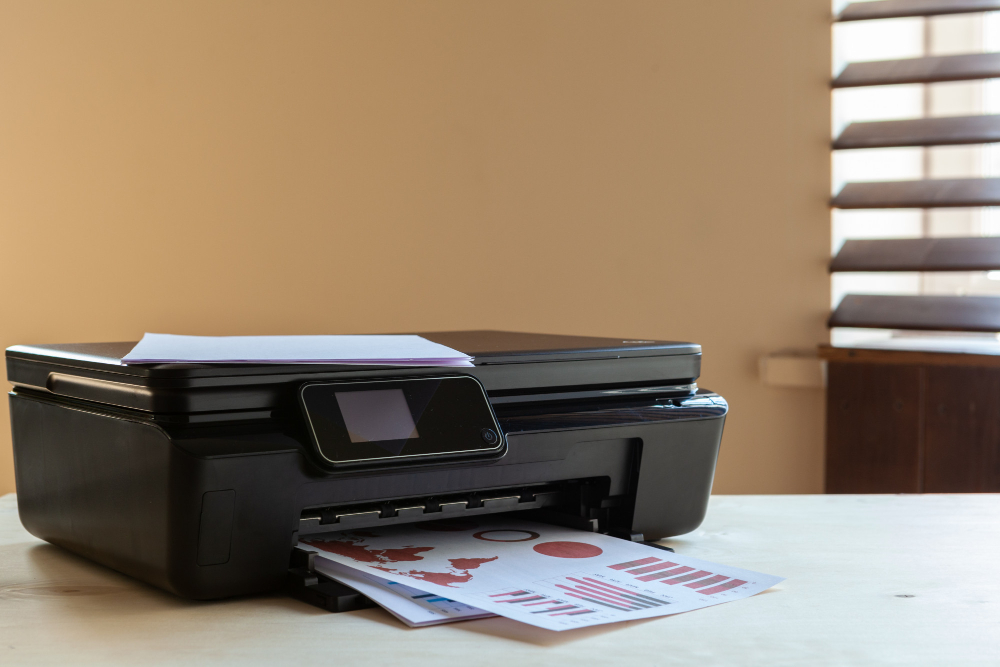Inkjet printers are known for producing vibrant, high-quality prints, but they can occasionally suffer from issues such as faded or blurry prints. These problems not only waste time and resources but also compromise the final output quality. In this guide, we’ll explore the common causes of faded or blurry prints and provide step-by-step solutions to restore your printer’s performance.
Common Causes of Faded or Blurry Prints
- Low Ink Levels: When ink cartridges are running low, prints may appear faded or incomplete.
- Clogged Printheads: Dried or clogged ink in the printhead nozzles can affect print quality.
- Misaligned Printheads: Poor alignment leads to blurry text and graphics.
- Wrong Paper Type: Using incorrect or low-quality paper can impact ink absorption, causing blurriness.
- Moist or Damp Paper: Paper that has absorbed moisture can result in unclear prints.
- Outdated Printer Drivers: Old or incompatible drivers can affect the printing process.
- Printer Settings Issues: Incorrect print settings might not optimize for quality.
Step-by-Step Guide to Fix Faded or Blurry Prints
Step 1: Check Ink Levels
- Open your printer’s control panel or software.
- Navigate to the Ink Levels or Cartridge Status section.
- Replace any cartridges that are running low.
- Ensure you use genuine ink cartridges recommended by the printer manufacturer for optimal results.
Step 2: Clean the Printheads
- Automated Cleaning:
- Access the printer software on your computer.
- Look for the Maintenance or Tools section.
- Select Clean Printhead or Nozzle Check.
- Follow on-screen instructions to complete the cleaning process.
- Manual Cleaning (if automated cleaning fails):
- Turn off the printer and unplug it.
- Open the printer cover and carefully remove the printhead.
- Use a lint-free cloth dampened with distilled water or isopropyl alcohol to clean the nozzles.
- Let the printhead dry completely before reinserting it.
Step 3: Perform a Printhead Alignment
- Open the printer software on your computer.
- Navigate to Maintenance or Printer Settings.
- Select Align Printhead or Calibrate Printer.
- Follow the instructions provided to complete the alignment process.
Step 4: Inspect the Paper
- Use high-quality, printer-compatible paper.
- Ensure the paper is dry and free of wrinkles or folds.
- Load the paper correctly in the tray to avoid misfeeds.
- For high-resolution printing, opt for specialty paper designed for inkjet printers, such as photo or glossy paper.
Step 5: Adjust Printer Settings
- Open the Print Properties or Print Preferences dialog.
- Select a higher-quality setting, such as Best or High Quality Print.
- Choose the correct paper type from the options provided.
- Disable the Draft Mode, if enabled, as it reduces ink usage but compromises print quality.
Step 6: Update Printer Drivers
- Visit the official website of your printer manufacturer.
- Locate the Drivers or Support section.
- Download and install the latest driver compatible with your printer model and operating system.
- Restart your computer and printer to ensure the new driver is properly installed.
Step 7: Check the Print Resolution
- Go to the printer settings in the print dialog.
- Verify the resolution settings and increase it if needed.
- For high-quality prints, aim for a resolution of 600 dpi or higher.
Step 8: Inspect and Replace the Printhead (if necessary)
If your printer continues to produce blurry or faded prints despite cleaning, the printhead might be worn out or damaged. Contact the manufacturer for assistance in replacing the printhead.
Preventive Measures to Avoid Faded or Blurry Prints
- Regularly Use the Printer: Print at least once a week to prevent ink from drying in the nozzles.
- Store Ink Properly: Keep ink cartridges sealed and stored in a cool, dry place until use.
- Choose High-Quality Paper: Always use paper that is compatible with your printer for best results.
- Keep the Printer Clean: Dust and debris can accumulate in the printer, affecting print quality. Regular cleaning is essential.
- Run Maintenance Tools: Periodically perform printhead cleaning and alignment through the printer software.
Troubleshooting Tips for Persistent Issues
Problem 1: Blurry Text and Graphics
- Ensure the printer is on a stable, vibration-free surface.
- Use a higher-quality paper setting for sharper prints.
- Check for software updates to ensure compatibility with your system.
Problem 2: Ink Smudging on Prints
- Allow prints to dry completely before handling.
- Adjust the drying time in the printer settings, if available.
- Use paper with a coating designed for inkjet printing.
Problem 3: Uneven or Streaky Prints
- Replace cartridges that show signs of wear or damage.
- Perform a deep cleaning cycle if standard cleaning doesn’t resolve the issue.
- Verify that the printer firmware is up-to-date.
When to Contact Support
If the issue persists despite following the above steps, it may indicate a more serious problem with the printer’s hardware. Contact the printer manufacturer’s support team or a professional technician for further assistance.
Faded or blurry prints on inkjet printers can be frustrating, but most issues can be resolved with proper troubleshooting and maintenance. By checking ink levels, cleaning printheads, aligning the printer, and using high-quality materials, you can restore your printer’s performance and achieve sharp, vibrant prints. Preventive measures such as regular use, proper storage, and routine maintenance will also help ensure consistent print quality.







